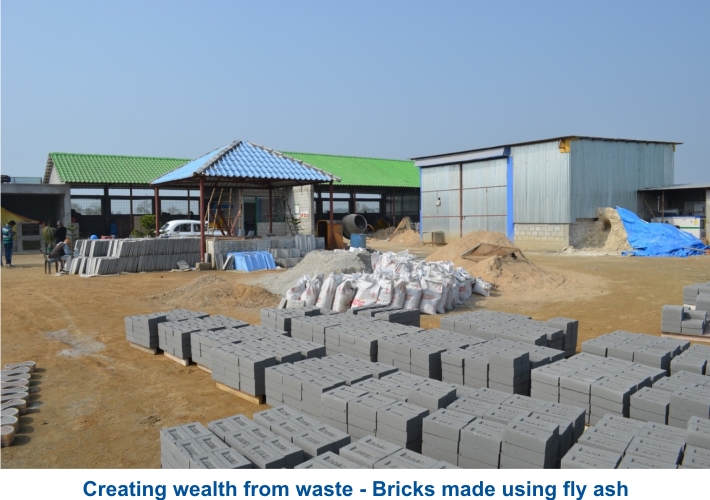|
Resource Efficiency for
Urban India
Cities
are regarded as ‘Engines of Inclusive Growth’ as all global
transformations and opportunities culminate in cities. The trends of
rapid urbanisation and socio-economic and environmental implications
unveil the importance of cities. India is urbanising at a decadal growth
rate of 31.16 per cent (Census 2011) and is expected to reach the 50 per
cent mark by 2050 (United Nations 2012). Not only the urban population
has increased, but urban areas have also grown from 2,774 towns in 2001
to 7,935 in 2011 (Census 2011). By 2030, it is expected that there will
be 68 cities with a population of more than one million, 13 cities with
more than 4 million people and 6 megacities with populations of 10
million or more (UNDP 2012). However, in India this trend of rapid
urbanisation has been unplanned and haphazard. The impacts are being
witnessed in the form of inadequate maintenance of urban infrastructure,
poor delivery mechanisms for public services and over exploitation of
the natural resource base.
Natural resources such as metals and minerals, water, biomass, land and non- renewable resources are the key inputs required for urbanisation. Restoring and maintaining the health of these resources by incorporating resource efficiency is a key element of sustainable development. It is not only needed to adequately feed current and projected populations, but also to provide a better quality of life to our future generations. UNEP has identified the term ‘resource efficiency’ to encompass: • the technical efficiency of resource use (measured by the useful energy or material output per unit of energy or material input), • the resource productivity, or the extent to which economic value is added to a given quantity of resources (measured by useful output or value added per unit of resource input); • the extent to which resource extraction or use has negative impacts on the environment (increased resource efficiency implies reduced the environmental pressures that cause such impacts). The quality of urban life and its resource footprint are strongly linked and the increasing need for basic infrastructure construction to support it signifies that there will be increasing pressure on the earth’s carrying capacity (UNEP: 2007).
Resource Consumption of Building M A sustainable city is defined as a city which is inclusive, resilient and decoupled from use of resources. The rapid urbanisation entails increasing consumption of natural resources like land, energy and building materials to meet the rising demand of construction along with rise in CO2 emissions. Buildings use 40% of energy, 30% of raw materials, 20% of land and water each, whilst accounting for 40% of CO2 emission, 30% of solid waste generation and 20% of water effluents (UNEP- 2010). India is in the process of implementing programmes aimed at enhancing its urban transformation. Majority of the construction under this urban transformation would be in the residential sector, estimated to have an increase of 4,972 million m2 of area from 2005 to 2030 (ASCI-NRDC, 2010). This would involve huge investment of resources and finances which could result in conflict over scarce and limited resources. Already 67% of the cement (consumes 75% of limestone) produced is used by the housing sector in the country (NSDC, 2009). 91,666 million tonnes of sand was consumed for building 42 million units of housing in 2011 (Krishna, 2013). Further, the current brick making process uses about 350 million tonnes of fertile top soil annually to meet the brick demand (Development Alternatives, 2012). Fly ash on the other hand is a waste product. As per estimates by the Fly Ash Bricks and Blocks Manufacturers’ Federation (FABMAFED), about 20 billion cubic feet (0.566 billion cubic metres) of topsoil could be saved annually if the existing 140,000 red brick furnaces in the country switched to using fly ash. Over the last two decades, the production of fly ash-based products has increased from 0.70 million tonnes in 1998-99 to 12.02 million tonnes in 2014-15, which constitutes 11.72 per cent of the total fly ash utilised in that year (Central Electricity Authority, 2015). Cities have the potential of delivering cost-effective policy responses to ensure resource efficiency as they are the hubs of innovation that can promote clean energy systems, spatial development and waste management strategies (OECD, 2010). Linkage of Resource Efficiency with Sustainable Development Goals 2030 The 2030 Agenda for sustainable development defined by the Sustainable Development Goals (SDGs) have also assigned an important position to resource efficiency. This is directly reflected in Goal 12 on ensuring sustainable consumption and production patterns specifically in terms of substantially reducing waste generation through prevention, reduction, recycling and reuse. Eight other goals (Goals 2, 6, 7, 8, 9, 11, 14 and 15) also directly refer to resource efficiency or sustainable use of resources. The development model being followed by the country is characterised by extensive reliance on natural resource extraction, thus putting enormous pressure on natural resources leading to increased costs, higher rate of forest degradation and reduced availability of agricultural land. The Government of India adopted the National Environmental Policy in 2006, with an overall objective to conserve environmental resources through their efficient use, encourage intergenerational equity and ensure application of principles of good environmental governance. Given that resource efficiency has links to the attainment of SDGs and the aspirations for GHG (Green House Gas) emissions reduction in the Paris Agreement; in the global context, resource efficiency should also rank among the top priorities for enabling sustainable development now and in the future. The flow of materials and resources along globalised supply chains and product life cycles strengthens the need for a global perspective of resources as well as a need for integrating various policy areas for promoting resource efficiency. The formulation of the Sustainable Development Goals (SDGs) offers us an opportunity to redefine India’s development by not only focusing on the ends, but also on the means to achieve it. ■
Rishabh Misra
References: |

 aterials
in India
aterials
in India